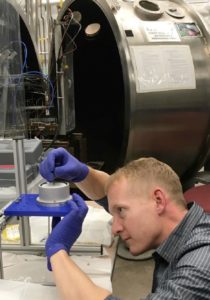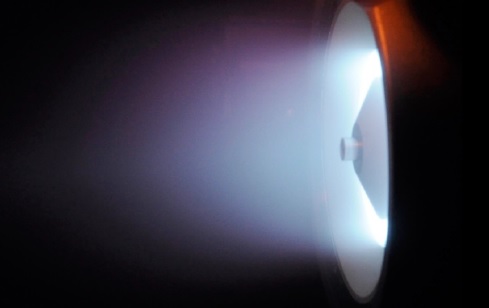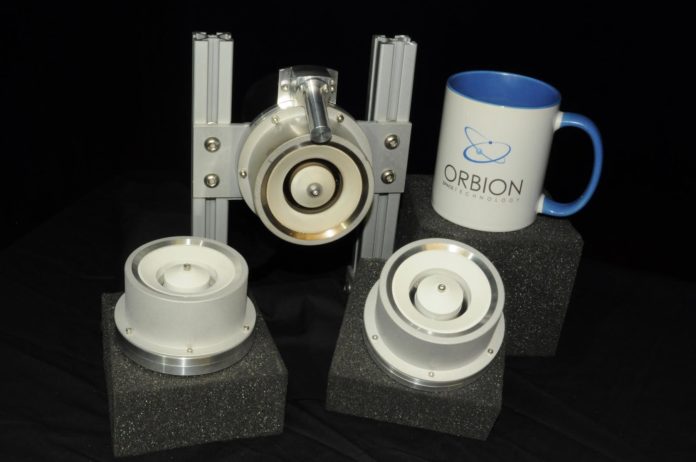Like passengers utilizing public transportation, all satellites on a single launch vehicle are not going to the same destination, yet the bus only has one stop.
Once a satellite is placed into orbit, it needs its own propulsion system to travel from the drop-off location to its final orbit destination, counteract drag over the entire mission to extend in-orbit lifetime, and perform controlled re-entry at its life’s end to prevent ‘space junk’.
With 9,000 small satellites expected to launch over the next 5-7 years — more satellites than have been launched since Sputnik started the space race — there is a need for an inexpensive, small, and efficient propulsion system produced on a mass scale.
Enter Orbion Space Technology, which aims to develop and manufacture Hall-effect systems (named Aurora) for small satellites on a mass scale, with the help of a Fortune 500 aerospace and defense contractor.
Beginnings
Orbion Space Technology was founded in early 2016 by Dr Brad King and Dr Jason D Sommerville — CEO and CTO respectively — who met when Sommerville joined King’s research team as one of his earliest doctoral students at Michigan Technological University. After completing graduate school, Sommerville and King were co-principals in another space company, Aerophysics, Inc., which conducted R&D for mostly defense and intelligence customers in the space community.
Orbion has closed two rounds of funding so far totaling US$3 million, including a US$500,000 grand prize awarded by Accelerate Michigan. The company aims to have a minimum viable product by early 2019, on-orbit deployment within a few months, and achieve profitability before 2021.
Orbion’s strategy has been to fill its staff with senior leadership and technical experts in the field of space propulsion. To that end, its present team comprises fifteen individuals, including former Vice Presidents, Directors, and Chief Engineers from the largest aerospace firms.
We interview Dr King, who talks about the uniqueness and applicability of Hall-effect plasma thrusters and how the NewSpace industry is bound for massive disruption in the coming years.
Could you provide a background on the work you’ve been doing, and the necessity for the technology Orbion is developing?

When it comes to developing smallsat propulsion systems, the technical requirements are clearly defined. A smallsat requires a dedicated, on-board propulsion system that will allow it to maneuver to its designated orbital location. It needs the ability to counteract atmospheric drag and remain in space, so as to extend its in-orbit lifetime. It should also be capable of performing controlled re-entry at the end of its lifetime, to reduce the increasing clutter of space junk orbiting the earth.
Of course, a critical challenge is in addressing the cost of longer-term orbital needs.
When a system runs out of fuel, a replacement must be launched or the satellite cannot
remain in orbit. This has tremendous impact on the viability of smallsat space missions;
the estimated cost to build and launch a 100-kg-class satellite, for instance, can be as
high as $50M per vehicle. With thousands of smallsats currently in the planning stages,
the market is hungry for a better, more efficient approach to smallsat launchers and
propulsion systems.
This is the first time Hall-effect plasma thrusters are being made widely accessible to
New Space operators. They have previously only been reserved for high-cost missions
with large, school-bus-sized satellites for government and commercial customers. As
they are typically built by hand, they have not been conducive to the volume production
necessary for New Space business models…that is, until Orbion flips the script on their
design and manufacture.
What has been the main roadblock towards the use of Plasma propulsion systems in small satellites so far – is it entirely the cost and resource issue?

Yes, the primary hurdle to widespread adoption of plasma propulsion has been the system cost. The performance benefits, when compared to chemical propulsion, are without question. For some types of missions plasma propulsion is known as an ‘enabling’ technology, meaning the mission cannot be conducted without it. For these missions, comparative cost of plasma propulsion with respect to other solutions is not a relevant metric since you either use plasma or you don’t go. However, there are many missions where plasma propulsion is ‘enhancing,’ meaning the mission can be accomplished without it, but the mission performance can be greatly increased. Historically, the high cost of plasma propulsion for enhancing missions has overwhelmed the increase in mission value and thus the cost/benefit ratio was prohibitive. By bringing the cost of the system way down, Orbion will change this calculus thus allowing widespread adoption of the technology.
What are some of the advantages and deficiencies you see in some of the NewSpace business models, and how is the space industry going to change over the coming years?
The main advantage of the NewSpace business model is that companies can produce spacecraft that are smaller and cheaper than anything ever flown. The deficiency is that there are limits to how small and how cheap and many startups seem to have oversold this model.
We are seeing some hard limits to the shoebox-sized satellites (cubesats) that are driving many architectures to consider larger 100-kg-class vehicles after being forced to give up their visions of cubesats.
100-kg-class vehicles are still small compared with ‘OldSpace,’ but perhaps not as revolutionary as early entrants to the market had hoped. Furthermore, the on-orbit failure rate of spacecraft built using the cheapest commercial parts has proven to be unacceptably high. More than one-half of all cubesats launched never even turn on to report their location in space, let alone return useable data. This needs to change. Small spacecraft hardware must become more reliable as architectures transition from prototype to operational.
What are some of the biggest, most interesting unresolved problems in propulsion at the moment, in your estimation?
The biggest and most interesting problems are laboratory and science challenges that could forever change humanity. Can we develop a propulsion system that can radically reduce the time required to transport humans to (and from) Mars? Can we propel a science craft to a nearby star and return data within a reasonable timeframe? These big questions are, for now, beyond the scope of commercial entities, but exciting nonetheless!
We understand that the Aurora system is not suitable for cubesats, for which you are working on a different propulsion system – any further details on this? Is this also a Hall effect system, or something entirely new?
The physics of a Hall-effect thruster are such that it cannot be scaled down arbitrarily. The Aurora system is about the smallest practical realization of this technology and there is little benefit to further size reduction. A Hall-effect thruster will never be compatible with a 3U cubesat. For that application, Orbion is working on a device that relies on completely different physics.
While we aren’t yet ready to release details, we can state that the underlying technology has been the subject of about 7 years of research and a few million dollars in funding already. There is much development left to complete, but the basic design and performance attributes have been established.
Many say that we are in space race 2.0 at the moment, with private players like SpaceX, Blue Origin etc breaking new ground. Also, Asia’s space industry has suddenly come into greater prominence, with China, India, and Japan looking to compete with each other as well as with ESA and NASA and other agencies. How do you think this will impact research and innovation in space in the coming years?
The increased activity across the globe is great for the entire industry. As the saying goes, “When the tide comes in, all boats rise.” India is keeping everyone on their toes with their low-cost and reliable launch system. Japan recently announced a $1B government investment into space startups.
Right now we’re observing a space age that is akin to the internet revolution: when capital funding meets with innovative minds in small startups the future is unpredictable.
For instance, when a few scientists invented the world-wide web to share atomic physics data across the ocean, they never envisioned Uber. Who knows what revolutionary application waits out there to be invented by NewSpace companies?
There are many who say that deep space travel will not be possible with the propulsion systems available to us today, which are too inefficient for large-space interstellar travel. Your thoughts?
Deep space travel will most certainly require discovery of new physics. The technology and science available to us now, unfortunately, paints a grim picture. But we must keep in mind that many many generations before us thought that they had discovered all that there was to discover. I’m sure there is something out there that we don’t know that, someday, will open up the path to human exploration of deep space.





